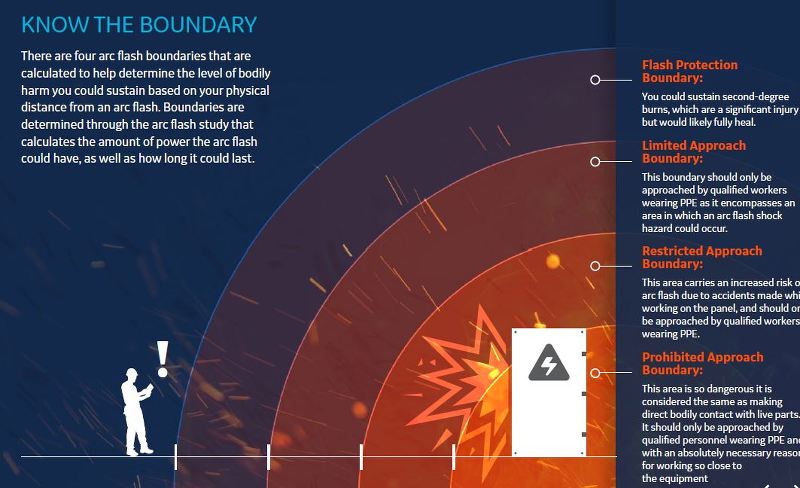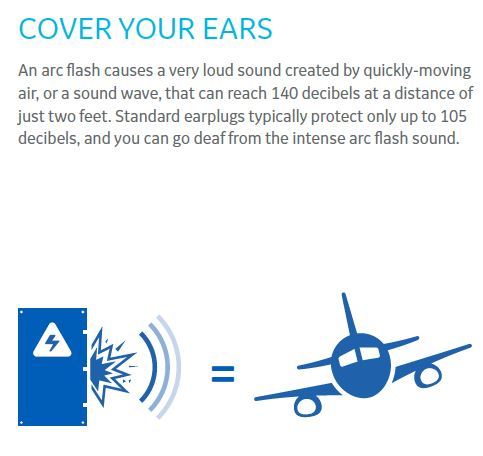Or to be realistic. Let's take the issue of loose breakers and bus bar or any loose connections in the main panel in typical US home.
When the breaker or wiring got loose. Arc would be formed. For typical 125A main breaker and 1/0 wire to the service entrance and the utility pole tap in US home. Assume it is the main breaker lugs that is loose. Can this form a self sustaining plasma that can grow in size as it feeds on the current enough to explode the panels and the room it is put on?
I'd like to hear reports of this. Worse-case scenario.
loose breaker to bus bar isn't same thing as short circuit or ground fault. Sure some arcing can occur but current is limited by the load that is in series with the arc. You have an arc every time you make or break a switch contacts, but for normal intended operation you have a load in series with the contacts as well, which limits the effects of that arcing. A load that draws 1 amp will have less arcing than a load that draws 1000 amps, but the switch for the 1000 amp load is going to be designed to better withstand this also.
How about the 240v red and black phase to phase, can it sustain an arc?
Also during short circuit. isn't it the current can go to over 20X. What did you mean the
transformers serving residential services do not provide substantial fault currents?
How high short circuit current can reach is dependent on source capacity, source impedance and circuit impedance between the source and the fault. You can have exact same constructed houses, short main terminals together and have different amount of current flow in each because of different sized transformers, different conductor sizes or type supplying them, different lengths of supply conductors, or differences in combinations of all those things. Every install has it's own circumstances. Then taking things a step further, a condition that maybe is not so much present at a dwelling, is that any running motors on the system can introduce even more energy to a fault.
gar, in typical US home like yours, or the
typical black and red 240v main feeder, and the white neutral and green ground wires. And let's say the main breaker is 125A with 1/0 going to the typical residential utility pole split phase transformers. If the electrician accidentally drop a wrench that shorts the bus bar of the 240v black and red lines. Can the 240v short sustain a arc enough to cause arc flash.
Let's actually compute. What is the maximum fault current in a typical residential utility pole transformers? What is the typical impedance of such utility pole? What units is the arc produced and what do you estimate is the value given typical US home residence? Thanks.
One might be able to say an average residential pole transformer has a certain fault current level, but that is at the transformer terminals. Thing is just 25 feet of conductor gives enough impedance to lower the maximum available fault current at the load end of said conductors. Now as already been mentioned just because the maximum fault current has been lowered, you still have the amount of time it takes to open the circuit (or before something burns open) involved in your total incident energy. Higher current for shorter time can result in less incident energy than lower current for longer time.
Ok. In industrial installations, most accidents involved falling tools that shorted the terminals which initiated arc flash. But what if an insect like a lizard cross the terminals, would this initiate arc flash too?
The lizard likely has high enough resistance that current is pretty limited, for under 600 volts anyway. Higher voltages, that lizard is still same resistance initially, but as it gets "cooked" could change things, carbon pathways can develop and arcing that continues on from there has little to do with initial resistance of the critter.
In the US. Are other houses served by 100kVa pole transformer like the following?
For 100kVA pole transformer, assumed 2% impedance. 100,000VA / 240V / 0.02 = 20,083A short circuit current available.
Can 20kA initiate arc flash during shorting fault? Not by falling tools but by insects like lizards shorting the terminals?
Houses with a lot of load may be individually served by a large transformer. Other times a large transformer may serve multiple customers. You can even find 4 or 5 customers served from only a 25 kVA transformer - all depends on demand from the customers. If they all have gas heat, water heating, and not much for other electric loads they get away with small transformers. Just because one has a 100 or 200 amp main breaker doesn't mean the current normally runs that high. A lot of homes with a 200 amp supply never see much more than 70 or 80 amps, and some may never even see that much - just depends on what loads there are an how they get used.






